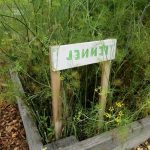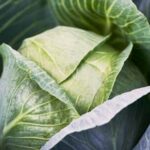Are you considering starting a vegetable garden in Washington? Whether you’re new to gardening or have years of experience, the lush Pacific Northwest climate provides an excellent environment for growing a wide variety of vegetables. In this article, we’ll explore the ins and outs of vegetable gardening in Washington, from selecting the best vegetables to dealing with common pests and diseases.
Washington’s unique climate offers both opportunities and challenges for vegetable gardeners. With the right knowledge and strategies, you can enjoy a bountiful harvest of fresh, home-grown produce. From choosing the best location for your garden to preserving your fruits and vegetables, we’ll cover all aspects of successful vegetable gardening in Washington.
Whether you’re interested in starting a small backyard garden or getting involved in community gardening events, there are plenty of resources and support available for vegetable gardeners in Washington. By following our tips and utilizing the wealth of local resources, you’ll be well on your way to enjoying the satisfaction of growing your own vegetables right here in Washington state.
Best Vegetables to Grow in Washington’s Climate
When starting a vegetable garden in Washington, it’s essential to select the right vegetables that are well-suited to the state’s climate. The cool and damp weather in Washington makes it an ideal environment for growing certain types of vegetables. Some of the best vegetables to grow in Washington’s climate include leafy greens like kale, spinach, and lettuce. These vegetables thrive in cooler temperatures and can withstand the frequent rainfall common in the state.
Root vegetables such as carrots, beets, and radishes also do well in Washington’s climate. They require minimal maintenance and can tolerate the moist soil conditions often found in the region. Additionally, these root vegetables are rich in nutrients and can be easily incorporated into a variety of dishes.
Washington’s climate also allows for the successful cultivation of broccoli, Brussels sprouts, and cauliflower. These cold-season crops can withstand frost and produce bountiful harvests in Washington’s cooler temperatures. By choosing these vegetables for your garden, you can ensure a thriving harvest despite the state’s unique climate challenges.
When planning your vegetable garden in Washington, it is important to consider how each type of vegetable will fare in the state’s specific weather conditions. By selecting vegetables that are well-suited to Washington’s climate, you can set yourself up for a successful and bountiful harvest.
| Vegetable | Reasons for Growing |
|---|---|
| Kale | Thrives in cooler temperatures and frequent rainfall |
| Carrots | Tolerates moist soil conditions; rich in nutrients |
| Broccoli | Withstands frost and produces well in cooler temperatures |
Tips for Starting a Vegetable Garden in Washington
Starting a vegetable garden in Washington can be a rewarding experience, but it’s important to start with some basic tips to ensure success. First, consider the climate and growing conditions specific to Washington when planning your garden. The state has a diverse range of microclimates, so it’s crucial to understand the specific conditions in your area before choosing which vegetables to grow.
Next, take into account the average last frost date in your region. In Western Washington, this typically falls between late March and early April, while in Eastern Washington it can range from mid-May to early June. Knowing this information will help you determine the best time to plant your vegetable garden.
When starting your garden, it’s also important to consider the soil quality in your area. Most of Washington has acidic soils, so it’s advisable to conduct a soil test before planting. This will help you determine whether any amendments are needed to optimize the soil for vegetable growth.
In addition, familiarize yourself with the different growing zones within Washington. The western part of the state falls under zones 6-9, while eastern Washington spans zones 4-7. Understanding your specific growing zone will guide you in selecting appropriate vegetables for your garden.
| Tips for Starting a Vegetable Garden | Washington Growing Zones |
|---|---|
| Consider the climate and growing conditions specific to Washington. | Zones 6-9 (western) and Zones 4-7 (eastern). |
| Determine the average last frost date in your region. | Last frost varies by region: late March/early April (Western WA) and mid-May/early June (Eastern WA). |
| Conduct a soil test before planting to assess soil quality. | Most of WA has acidic soils; amendments may be necessary. |
Selecting the Right Location for Your Vegetable Garden
When it comes to vegetable gardening in Washington, one of the most important factors for success is selecting the right location for your garden. The Pacific Northwest climate can be quite varied, so finding the ideal spot for your vegetable garden is crucial. Here are some tips for selecting the right location for your vegetable garden in Washington:
1. Sunlight: Choose a location that receives at least 6-8 hours of sunlight each day. Vegetables require ample sunlight to thrive, so it’s essential to pick a spot with direct sun exposure.
2. Soil Quality: Check the soil quality in potential garden locations. Washington’s soil can vary greatly depending on the region, so it’s essential to test the pH and nutrient levels before planting. Consider adding organic matter or amendments to improve soil quality if necessary.
3. Drainage: Ensure that the chosen location has good drainage to prevent waterlogging and root rot. Raised beds can be a great option for areas with poor drainage, allowing you to control the soil composition and moisture levels more effectively.
Maintaining and Caring for Your Vegetable Garden in Washington
Regular Watering and Mulching
In Washington, the climate can fluctuate significantly, so it is crucial to pay attention to the watering needs of your vegetable garden. Most vegetables require regular watering, especially during hot summer months. Consider installing a drip irrigation system to ensure consistent moisture levels. Additionally, mulching around your plants can help retain soil moisture and suppress weed growth, which is essential for maintaining a healthy vegetable garden in Washington.
Fertilizing and Soil Management
To ensure a thriving vegetable garden in Washington, it’s important to regularly test and amend your soil as needed. Nutrient deficiencies are common in many Washington soils, so using organic fertilizers or compost can provide essential nutrients for your vegetables. Consider enriching your soil with organic matter such as compost or aged manure to improve soil structure and fertility. This will help promote healthy plant growth and increase resistance to pests and diseases.
Weed Control and Maintenance
Keeping up with weed control is essential for the success of your vegetable garden in Washington. Weeds can compete with your vegetables for water, nutrients, and sunlight. Regularly hand pulling weeds or using mulch can help keep them at bay. Additionally, proper maintenance of garden tools such as regular cleaning and sharpening can ensure efficient gardening practices here in Washington.
By properly maintaining and caring for your vegetable garden in Washington through regular watering, soil management, fertilizing, and weed control, you will be well on your way to a successful harvest of delicious home-grown produce.
Dealing With Common Pests and Diseases in Washington
When it comes to vegetable gardening in Washington, dealing with common pests and diseases is a crucial aspect of maintaining a successful garden. Here are some common issues that vegetable gardeners in Washington may encounter, as well as tips for managing them:
Common Pests:
- Aphids: These small insects can cause damage by sucking the sap from plants. To manage aphids, try using insecticidal soap or encouraging natural predators like ladybugs and lacewings.
- Cabbage Worms: These pests can decimate cabbage, broccoli, and other brassica crops. Handpicking caterpillars and applying Bacillus thuringiensis (BT) can help control their population.
- Slugs and Snails: These slimy creatures can munch on tender seedlings and leaves. To deter slugs and snails, try using copper tape around the base of your plants or applying organic slug pellets.
Common Diseases:
- Powdery Mildew: This fungal disease can affect a wide range of vegetables, including cucumbers, squash, and peas. To prevent powdery mildew, ensure good air circulation around your plants and avoid overhead watering.
- Tomato Blight: Both early blight and late blight can affect tomato plants in Washington’s damp climate. To manage blight, use disease-resistant varieties, practice crop rotation, and avoid watering the foliage of your plants.
- Root Rot: Excessive moisture in the soil can lead to root rot in vegetable plants. Proper drainage and avoiding overwatering can help prevent this common issue.
By staying vigilant and taking proactive steps to manage pests and diseases in your vegetable garden, you can increase your chances of a bountiful harvest in Washington’s unique climate.
Remember that different regions within Washington may experience different pest and disease pressures, so it’s important to stay connected with local gardening communities or extension services for region-specific advice related to vegetable gardening washington.
Harvesting and Preserving Your Vegetable Garden Produce in Washington
When it comes to vegetable gardening Washington, timing is everything. To ensure the best flavor and nutritional value, it’s important to harvest your vegetables at the right time. Different vegetables have different indicators for when they are ready to be harvested, so it’s crucial to familiarize yourself with these cues.
For example, root vegetables like carrots and radishes are ready to be harvested when you can see the tops of the roots peeking out of the soil. On the other hand, tomatoes should be picked when they are fully colored but still firm to the touch. Be sure to regularly inspect your garden for ripe produce and harvest accordingly.
Preserving Your Vegetable Garden Produce
Once you’ve harvested your bountiful vegetable garden in Washington, you may find yourself with more produce than you can consume fresh. In this case, preserving your vegetables is a great way to enjoy them throughout the year. Canning, freezing, and pickling are popular methods for preserving vegetables.
Canning
Canning involves using heat to kill bacteria and create airtight seals that prevent spoilage. This method can be used for a wide variety of vegetables including tomatoes, green beans, and pickles.
Freezing
Freezing is a simple and convenient way to preserve almost any type of vegetable from your garden. It helps retain most of the nutritional value and flavor of the produce.
Pickling
Pickling is a fun way to add flavor to your vegetables while also extending their shelf life. Vegetables like cucumbers, carrots, and peppers can be preserved through pickling.
By mastering these preservation techniques, you can savor the taste of your homegrown vegetables all year long.
Community Resources and Events for Vegetable Gardeners in Washington
In conclusion, the state of Washington offers a rich and diverse environment for those interested in vegetable gardening. With its unique climate and soil conditions, there is a wide range of vegetables that can thrive in this region with the right care and attention. From leafy greens to root vegetables, Washington provides an excellent opportunity for gardeners to explore different varieties and experiment with their gardens.
For those looking to start a vegetable garden in Washington, it’s essential to consider the best vegetables that grow well in this particular climate. The state also provides various community resources and events that can offer valuable support and knowledge sharing for budding vegetable gardeners.
Whether it’s joining local gardening clubs, attending workshops, or visiting farmers’ markets, there are plenty of opportunities to connect with like-minded individuals and gain insights into successful vegetable gardening practices specific to the region.
Furthermore, maintaining and caring for a vegetable garden in Washington may present its unique challenges such as dealing with common pests and diseases. However, arming oneself with information about preventative measures and natural remedies can go a long way in ensuring a healthy harvest. Overall, vegetable gardening in Washington not only offers the satisfaction of growing one’s food but also presents an opportunity to be part of a vibrant community dedicated to sustainable living through gardening.
Frequently Asked Questions
When Should I Plant My Garden in Washington State?
In Washington State, the best time to plant your garden is typically in late March to early April. This timing allows for the ground to thaw and for the risk of frost to diminish, giving your plants a good start.
What Grows Well in a Garden in Washington State?
Many vegetables and fruits grow well in a garden in Washington State, including tomatoes, cucumbers, peppers, zucchinis, strawberries, and raspberries. Herbs like mint, thyme, and rosemary also thrive in the state’s climate.
What Vegetables Are Easy to Grow in the Pacific Northwest?
Several vegetables are relatively easy to grow in the Pacific Northwest due to its mild climate. These include leafy greens like lettuce and spinach, root vegetables such as carrots and beets, as well as hardy crops like broccoli, cauliflower, and peas. These plants tend to do well with the region’s temperature and rainfall patterns.

If you’re looking to get into vegetable gardening, or are just looking for some tips on how to make your current garden better, then you’ve come to the right place! My name is Ethel and I have been gardening for years. In this blog, I’m going to share with you some of my best tips on how to create a successful vegetable garden.





